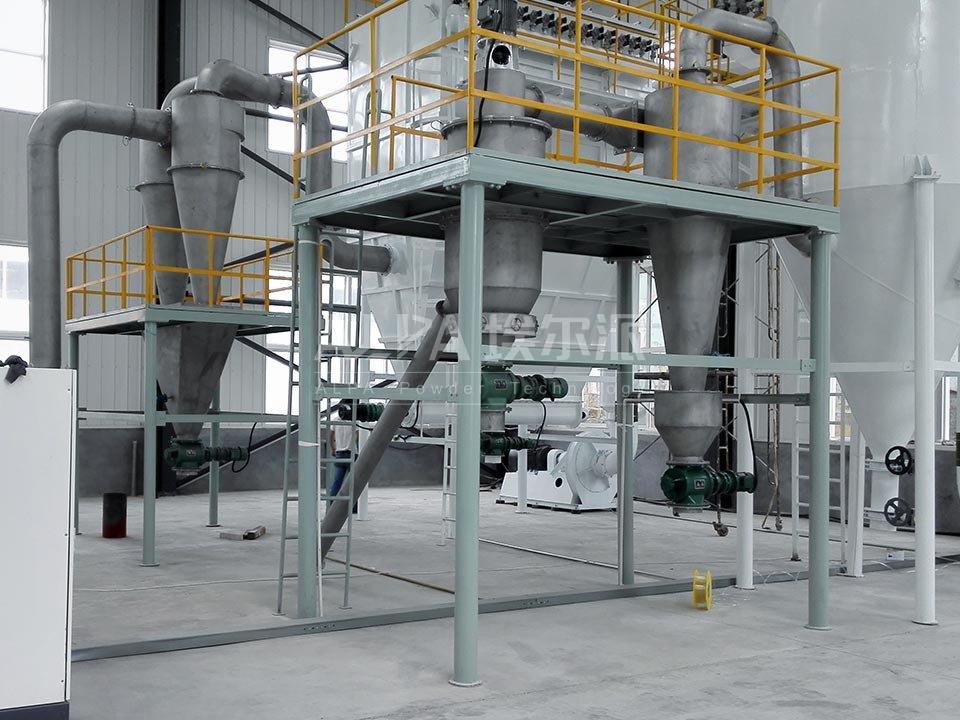Installation precautions of air classifier
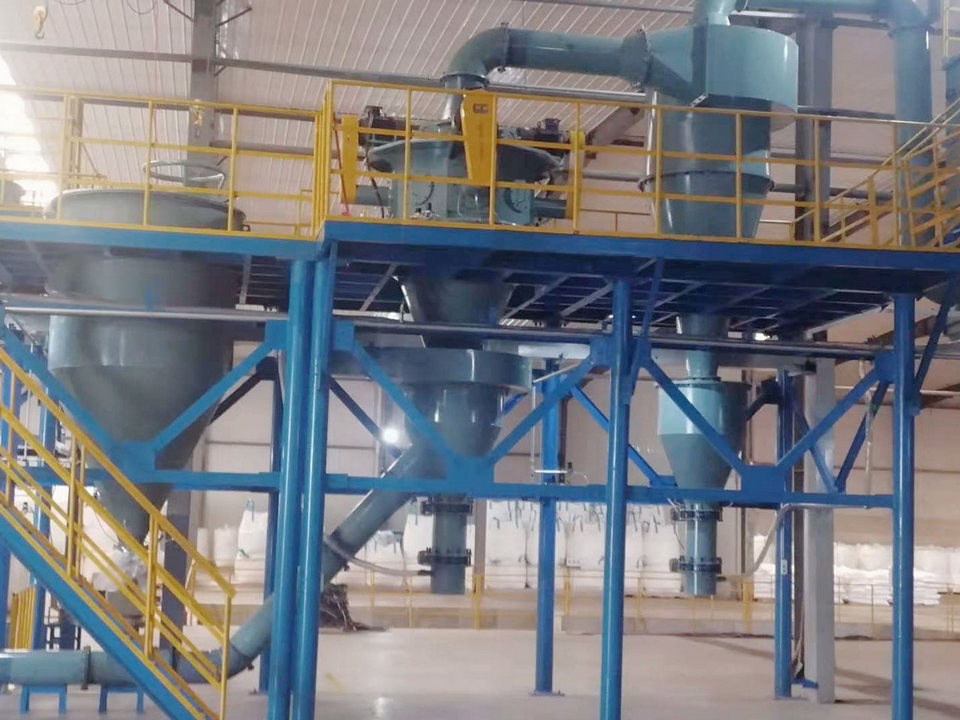
1. Perform a preliminary inspection of the classifier, fan and other host equipment. Whether there is any damage to the components during transportation or after long-term storage, check whether there is any foreign matter in the internal cavity of the equipment and the air duct of the fan, rotate the grading impeller and the main shaft of the fan, and observe whether Flexible rotation.
2. Check the tightness of the pre-installed parts of the equipment, and add lubricating oil to the parts that need to be lubricated.
3. Install the grading wheel to prevent collision. The grading main engine and fan should be level tested, and the level should be found with gaskets, and those with basic requirements should be fixed with the foundation.
4. Sealing gaskets should be equipped for the pipeline interfaces that require sealing.
5. After the classifier is installed, observe the running direction of the classifying motor first.
6. When installing and wiring the electric control cabinet, carefully check the corresponding relationship between the serial number of the wiring terminal and the equipment, and it should not be misplaced.
7. After installation, you can run the vehicle empty for 1-2 hours, tighten the loose bolts at any time, and carefully check the accuracy and coordination of the equipment actions.
The composition & function of the air classifier system
Some application fields of ultrafine powder have certain requirements on the particle size distribution or gradation of ultrafine powder. Only fine classification of ultrafine powder products can meet the requirements, such as microelectronics, advanced ceramics, advanced abrasives, paper fillers and Coatings, plastics and rubber fillers, paint pigments or fillers, toners and other industries. Airflow classifier is a professional equipment for fine classification of ultra-fine powder, and it has been widely used in various fields.
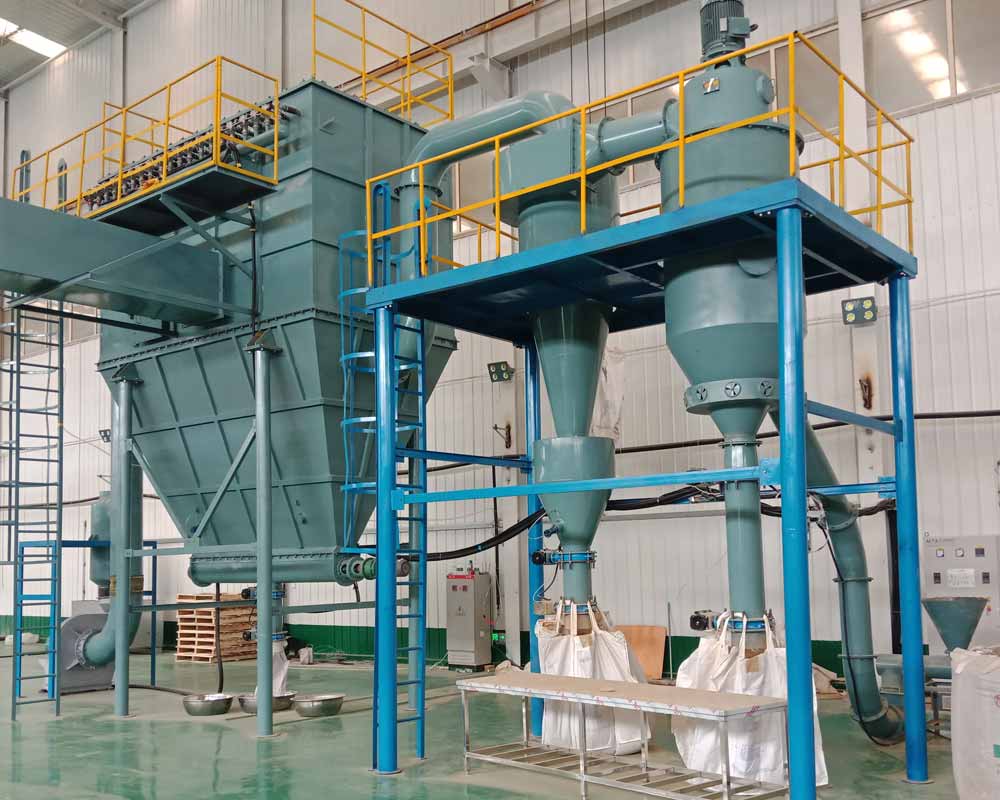
The air flow classifier is mainly composed of a feeding control system, a classifier host (1-4 units), a high-efficiency cyclone collector, a pulse bag filter, a high-pressure induced draft fan and an electrical control system.
(1) Feeding control system: The feeding control system is composed of a star feeder or a vibrating feeder combined with a frequency conversion control instrument, a feeding bin, etc., and a continuous uniform speed control of the feeding is achieved by adjusting the output frequency/current level of the feeder.
(2) Classifier host: The classifier host is mainly composed of a motor, a grading wheel, a cylinder, etc., which can effectively classify materials by adjusting the speed of the grading wheel and cooperating with the secondary air.
(3) The impeller of the classifier is adjusted by the frequency converter, and protection measures such as loss of voltage protection, over current protection, material level control, operation status monitoring and alarm system are designed.
(4) Cyclone collector: This equipment is a first-level collection system in classified products. After the dust-laden airflow enters the cyclone collector, due to the centrifugal force, the powder will slide down the wall of the cylinder and be separated and purified at the end of the inner cone. The purified gas and a small amount of fine powder are discharged through the cyclone center tube.
(5) Pulse bag filter: This equipment consists of a bag collection device, a pulse cleaning device and a pneumatic control device.
Performance characteristics of air classifier
Air classifiers are often used in series with grinding equipment because it can precisely control the particle size of the finished product. For example, the airflow grinding equipment with a classification system is screened by the classification system after grinding, and the particles of qualified particle size are passed through the classification wheel with the airflow to the next process, and the coarse particles that do not meet the particle size are returned to the grinding chamber to continue grinding. Because of the precise screening function of the air classifier, it can be used not only alone, but also in series with most grinding equipment.
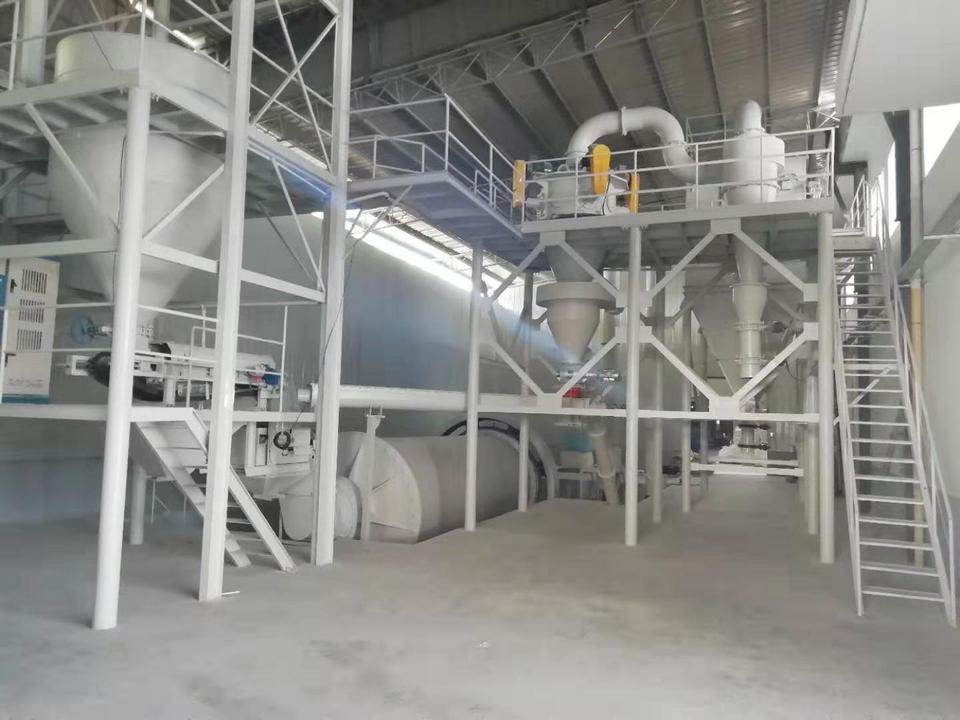
The principle of the air current classifier is that the material is quantitatively raised to the classification area through the feeder under the action of negative pressure air, and under the action of the strong centrifugal force generated by the high-speed rotating classification turbine, the coarse and fine materials are separated, and the fine particles meeting the particle size requirements pass through The gap between the grading wheel blades enters the cyclone separator or the dust collector to collect, the coarse particles entrained by the part of the fine particles hit the wall and the speed disappears, and descends along the cylinder wall to the secondary air outlet. After the strong elutriation of the secondary air, the coarse and fine particles are separated. The fine particles rise to the classification zone for secondary classification, and the separated coarse particles are discharged through the unloader.
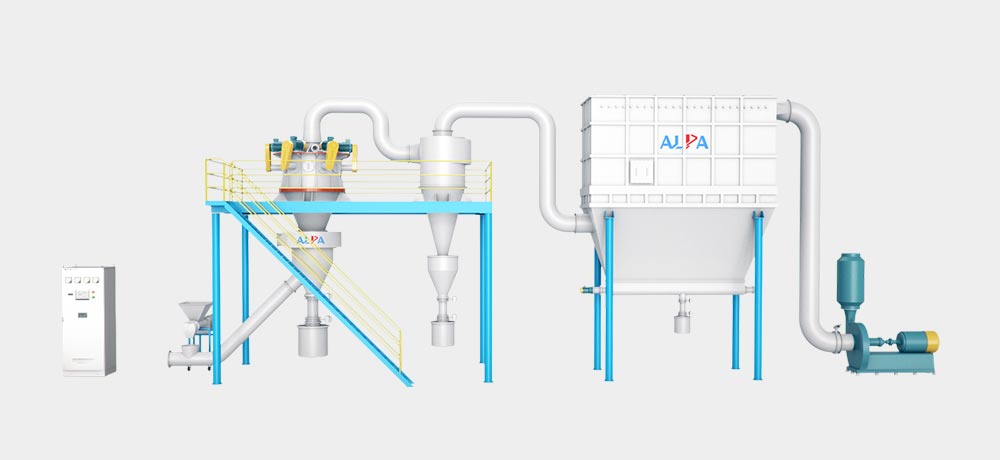
Performance characteristics of air classifier
- It is suitable for fine grading of powder, the particle size of the grading product can reach D50:1~45μm, the product size can be adjusted, and the variety change is extremely convenient.
- High classification efficiency (extraction rate) 60% to 90%.
- The classification accuracy is high, the particle size distribution is narrow, and oversized particles and sieve residues in the product are completely eliminated.
- Low rotation speed and long service life: The rotation speed of the classification wheel is 50% lower than other horizontal and vertical classifiers for the same classification particle size. When producing powder with Mohs hardness <5, the grading wheel has no abrasion; when producing powder with Mohs hardness ≥ 7, the service life of the grading wheel is 5-8 times longer than that of other horizontal and vertical types.
- The vertical grading turbine device is adopted, which has low speed, wear resistance and low system power configuration.
- Multi-stage classifiers can be used in series to produce products with multiple particle sizes at the same time.
- It can be used in series with jet mill, impact mill, ball mill, vibration mill, Raymond mill and other grinding equipment to form a closed loop.
- The system is produced under negative pressure, no dust pollution, excellent environment, high degree of automation, strong stability, and easy operation.
The operation points of the air classifier
In the ultra-fine classification equipment, the main product is the air flow classifier. It is necessary to understand the basic operation of the air flow classifier.
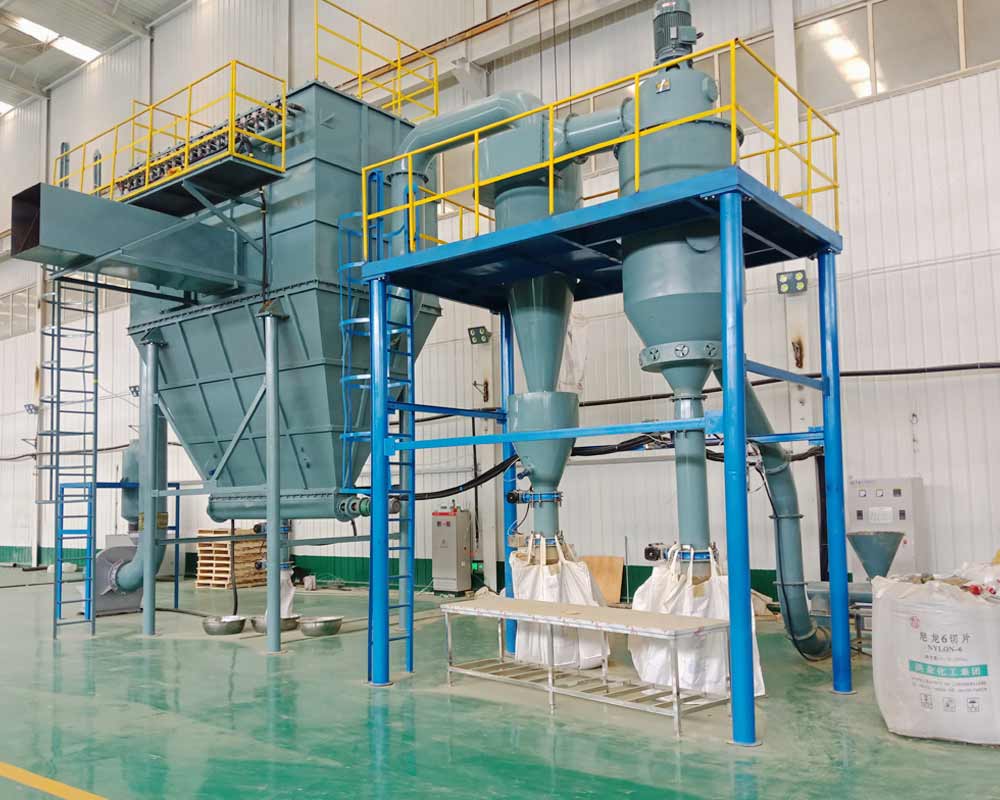

1. Before starting the equipment, check the connection parts, seals and wiring, etc., and start operation only after all checks are correct.
2. The power-on operation should be performed in accordance with the power-on sequence. 3 minutes before shutting down, stop feeding, and then shut down again, the order is opposite to the order of starting up.
3. The feed volume should be determined according to the load of the main engine to ensure that the main engine is under the rated load.
4. The fineness of the separated particles can be adjusted to meet the classification requirements.
5. If it is to separate heat sensitive materials, the power of the main motor should be slightly lower than the rated power.
6. The size of the air volume in the conveying pipeline can be realized by adjusting the air door of the fan.
7. The tension of the belt should be checked to prevent belt slippage.
Maintenance of air classifier equipment
Air current classifier is a kind of air classification equipment. The classifier, cyclone separator, dust collector and induced draft fan constitute a classification system. It has been widely used to purify quartz, feldspar, mica, kaolin, magnesium oxide, etc.
Under the action of the suction of the fan, the air flow classifier moves the materials to the classification area at a high speed from the inlet of the lower end of the classifier along with the upward air flow. Under the effect of the strong centrifugal force generated by the high-speed rotating classification turbine, the coarse and fine materials are separated. The fine particles that meet the particle size requirements enter the cyclone separator or dust collector through the gap between the grading wheel blades for collection.
After the coarse particles entrained by the air classifier collide with the barrel wall, the speed disappears and descends to the secondary tuyere along the barrel wall. Coarse particles and fine particles are separated by intense elution with secondary air. The fine particles rise to the classification zone for secondary classification, and the coarse particles fall to the discharge port for discharge.

Machinery also needs constant protection from maintenance personnel. Practice has proved that the service life of equipment depends to a large extent on the quality of maintenance. In order to ensure the safe operation of equipment, the following are some common protection methods for air classifiers:
1. Before installing the air classifier, clean the pneumatic conveying pipeline with compressed air.
2. After the grading wheel has been running for a period of time (usually three months), the usage should be checked in time.
3. The motor should be placed in a well-ventilated place, and regularly check whether the cooling fan of the motor is working properly.
4. When starting the air flow classifier, it should be started slowly. The time from zero to working speed should generally not be shorter than 50 seconds.
5. If there is a problem with each pressure reducing valve, it should be replaced and repaired in time.
6. Thoroughly clean the vacuum cleaner, dust collection room and clean room in the open air at least once a year to avoid agglomeration and deposition.
7. All bearings should be smoothed and protected with lubricating oil regularly, and loose fasteners should be tightened in time to adjust the clearance of moving parts.
Troubles and countermeasures of air classifier
In the metal powder industry, the air classifier is a common equipment. It has the function of accurately classifying and segmenting ultra-fine powder according to the particle size. It is especially suitable for iron powder, magnesium powder, stainless steel powder, aluminum powder, titanium powder, Super fine grade of alloy powder and other materials. The air current classifier is a type of dry air classification equipment. It is different from the general classification equipment with a screen. It is a centrifugal classifier with a flow field control device and a high-speed turbine rotor. In the grading process, no pollution is generated, and no temperature rises. An inert gas protection device can be added to achieve the purpose of explosion-proof and anti-oxidation.

At present, air classifiers are widely used in various industries. However, in the event of a failure or an abnormal phenomenon, the supply of raw materials must be stopped quickly, and the system should be stopped according to the actual situation, and corresponding measures should be taken.
- The powder flow at the outlet of the raw material supply pipe is not uniform, or there is an obvious gas line in the middle.
Reason: There is a foreign matter blockage at the outlet of the raw material supply pipe, or there is an attachment.
Corresponding measures: remove foreign objects or attachments. The user cannot disassemble the raw material supply pipe without authorization. If there is an abnormality in the air classifier that needs to be decomposed, you should contact the supplier in time, and you need to send the spray pipe to the supplier or the supplier will send someone to maintain it.
- The powder flow of the classifier body oscillates greatly
Reasons: (1) The inlet of the raw material supply pipe is blocked: the powder attached to the wall of the inlet of the raw material supply pipe suddenly collapses due to some reason, temporarily blocking the inlet. (2) The pipeline is blocked or leaked.
Corresponding measures: The feed pipe has an adaptive function, which can balance and solve the problem by itself. At this time, there is no need to stop the machine, and the air flow classifier will recover by itself after a period of time. Sometimes it can be manually assisted in recovery. Check the leakage of pipeline blockage.
- The collection rate has changed a lot
Reasons: (1) the pipeline or the dust collector is blocked; (2) the pipeline is leaking; (3) the grading knife is severely worn.
Corresponding measures: Check the blockage and leakage of the air flow classifier pipeline or collector. Replace severely worn grading knives in time.
- Fan overload trip
Reason: The classifier body, pipeline or dust collector is blocked.
Corresponding measures: Check the blockage of the air flow classifier body, pipeline or collector.
The air classifier is a kind of mechanical equipment, so it is inevitable that it will malfunction during long-term use or improper operation. Under normal circumstances, the manufacturer of the air classifier will conduct training for the user's operator after the equipment is sold, which includes troubleshooting and troubleshooting. However, if there are some major problems, it is recommended to contact the manufacturer to achieve Quickly resolve.
The functional characteristics and common problems of air classifier
The air flow classifier is a professional gas classification equipment, which is widely used in the field of product processing. So what are the performance characteristics of the air classifier? What problems often occur with air classifiers?
[What are the performance characteristics of the air classifier]
Airflow classifier is a commonly used equipment in the field of product processing. Only with a classifier can more precise raw materials be processed. Only with these extremely high-precision raw materials can companies produce better quality products.
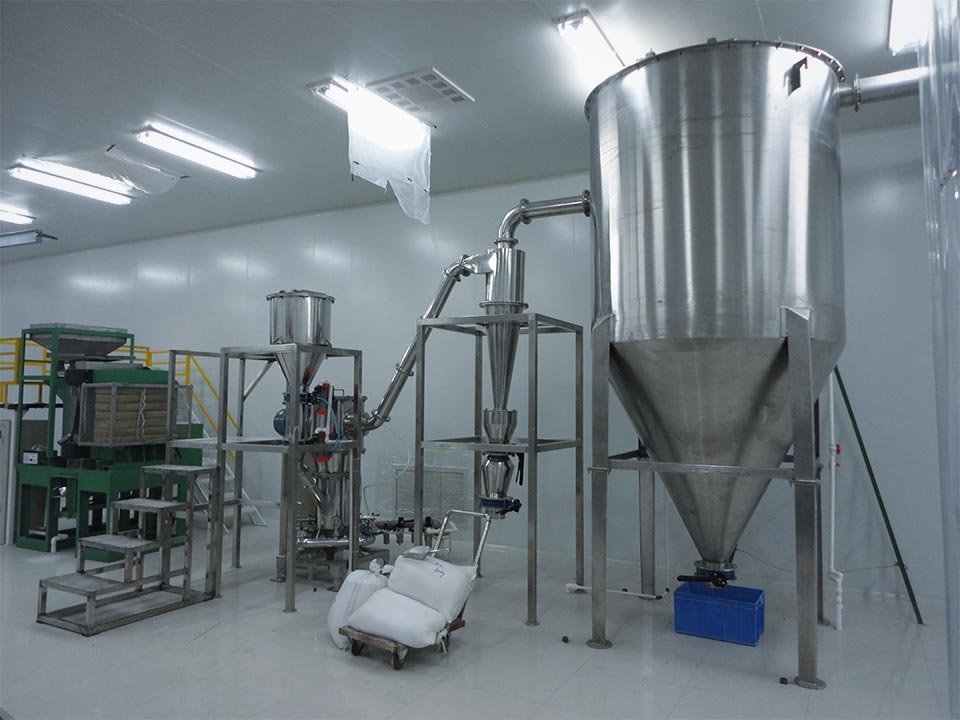
Air classifiers commonly used in enterprises generally have the following performance characteristics:
1. It is suitable for the fine classification of dry-process micron products. It can classify spherical, flake, and needle-shaped particles, and can also classify particles of different densities.
2. The particle size of the graded products can reach D97: 8~150 microns, the product size is steplessly adjustable, and the variety is extremely convenient to change.
3. The classification efficiency (extraction rate) is 60%~90%, and the classification efficiency of materials with good fluidity is high, otherwise the efficiency is reduced.
4. Vertical or horizontal grading turbine device is adopted, with low speed, wear resistance and low system power configuration.
5. Multiple air classifiers can be used in series to produce products with multiple particle sizes at the same time.
6. It can be used in series with ball mill, vibration mill, Raymond mill and other grinding equipment to form a closed loop.
7. Large output, low energy consumption and high classification efficiency.
8. The particle size is concentrated. The machine uses an original impeller for classification. The stable classification technology and special sealing measures effectively prevent the leakage of coarse particles, so that the product has no large particles, and the particle size is concentrated and the classification accuracy is high.
[What are the common problems of air classifiers]
The processing accuracy and classification accuracy of product raw materials has always been the focus of the processing industry, because in some industries product raw materials will greatly affect the related quality of a product. Air flow classifier is a kind of air flow classification equipment. The classifier, cyclone separator, dust collector, induced draft fan, etc. form a complete set of air flow classification equipment.
1. What does the wind power of the induced draft fan of the air classifier have to do with?
The wind power of the induced draft fan of the classifier is related to the actual production goal of the enterprise. The wind power is selected by examining the particle size of the related products.
2. How to debug the air grading equipment?
The adjustment of the grading machine generally depends on its equipment structure, and the spacing of the grading slices, etc., and it must be adjusted to a suitable production environment in accordance with the actual production situation.
3. What are the main applications of the air classifier?
The classifier is mainly used in the fine classification of micron-level products. The classified products can be better classified, providing reliable guarantee for the production of products by enterprises.
Wide range of product applications for air classifiers
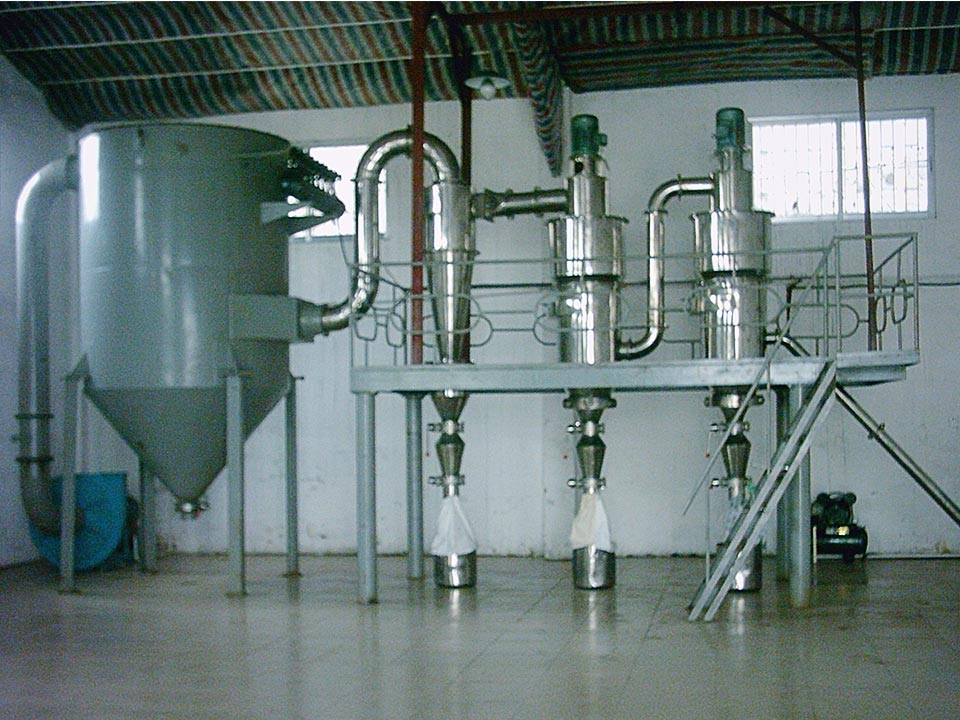
Features of Air Classifier:
1. Large output, low energy consumption and high grading efficiency.
2. Concentration of particle size: The machine uses an original vertical impeller for classification. The stable classification technology and special sealing measures effectively prevent the leakage of coarse particles, so that the product has no large particles, centralized particle size and high classification accuracy.
3. Reasonable structure: products with 1-6 particle sizes can be produced at the same time according to user requirements.
4. Strong applicability: It can be combined with various mills (jet mill, mechanical mill, ball mill, Raymond mill, vibration mill, etc.) to form a closed-circuit or open-circuit combined operation.
5. High degree of automation.
Working principle of air classifier:
Qualified fine powder is carried by the updraft into the turbo classifier above the fluidized bed. The classifier classifies qualified materials and enters the cyclone collector (if products with several particle sizes are required, multiple vertical turbines are added Classifier). The finer tail material is carried by the airflow into the bag filter. After being filtered by the bag, the tail material enters the discharge port at the lower part of the dust collector, and the pure air is emptied.
The main components of the machine: the standard configuration is a vertical turbine classifier. The crushing and classification are coordinated and completed synchronously. The speed of the classifier can be adjusted by frequency conversion, and the product fineness can be adjusted arbitrarily. If a processing process requires products with multiple granularities, two to four can be installed on the basis of a standard classifier to make this machine a two-connected-five-connected crushing and grading machine.
Application range: The crushing mechanism of this machine determines its wide application range and high fineness of the finished product. Typical materials include: superhard diamond, silicon carbide, metal powder, etc., high purity requirements: ceramic pigments, medicine, biochemical Etc. Low temperature requirements: medicine, PVC. By changing the ordinary air in the air source to inert gases such as nitrogen and carbon dioxide, the machine can be used as an inert gas protection device, suitable for the crushing and classification of inflammable, explosive, and oxidizable materials.
Airflow classifier product application:
1. High hardness materials: silicon carbide, various corundum, boron carbide, alumina, zirconia, garnet, zircon sand, diamond, etc.
2. Non-metallic minerals: quartz, graphite, kaolin, calcium carbonate, mica, barite, mullite, medical stone, wollastonite, talc, pyrophyllite, etc.
3. Chemical industry: aluminum hydroxide, silica gel, various dyes, epoxy resin, various additives, etc.
4. Food and medicine: pollen, hawthorn, pearl powder, Ganoderma lucidum, various vegetable powder, various Chinese herbal medicines, various health products, cosmetics, antibiotics, etc.
5. Metal materials: aluminum powder, magnesium powder, zinc powder, tin powder, copper powder, etc.
6. Other materials: ceramic materials, refractory materials, electronic materials, magnetic materials, rare earth materials, phosphors, copy material powders, etc.
Advantages and disadvantages of different sealing methods of air classifier
Air classifier is the key to the production of ultrafine powder, because the particle size of the final product is controlled by the classifier. In addition to the cutting particle size, the level of classification efficiency is very important to measure the quality of the air classifier. If the efficiency of the air classifier is high, the quality of the classified products is good, the energy consumption of the grinding operation can also be greatly reduced, and its processing capacity can be significantly improved.
Airflow classifier is a kind of equipment that uses centrifugal force of impeller rotation and drag force generated by airflow to classify materials. The seal between the rotating cage rotor and the stationary shell is an important part of the structure of the vortex air classifier. The failure of the seal is an important reason for the coarsening of the product or the mixing of coarse particles in the finished product.
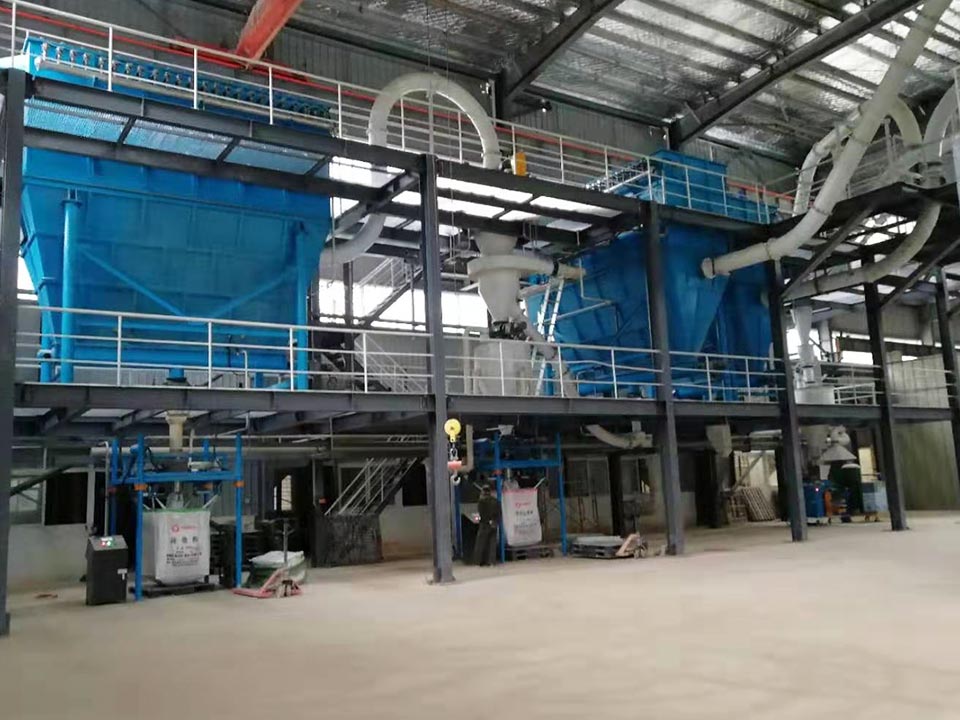
The sealing method of the air classifier:
(1) Airflow sealing
Ordinary turbo classifiers usually use the high-speed rotation of the classifying wheel to prevent particles from rising to the top of the classifying wheel. Theoretically, the sealing effect can be achieved. Most of the domestic horizontal classifiers also use airflow sealing, but the large particles of the classifying wheel cannot be strictly controlled. Leakage, and due to wear and tear, air consumption gradually increases over time.
(2) Mechanical seal
Mechanical seals can be divided into concave-convex mosaic seals, adjustable gap seals and labyrinth seals.
The main principle of the labyrinth seal is to control the sealing gap to ensure the sealing effect, but because the gap always exists, some coarse or even millimeter particles are directly mixed into the finished product without being sorted by the rotor. Therefore, the mechanical labyrinth seal The sealing effect in the superfine class machine is not good.
The differential pressure air classifier adopts a differential air flow sealing structure, which has the characteristics of high classification accuracy, energy saving, high efficiency and low production cost. It has been widely used in the classification and purification process of quartz, feldspar, mica, kaolin, magnesium oxide, etc. .

